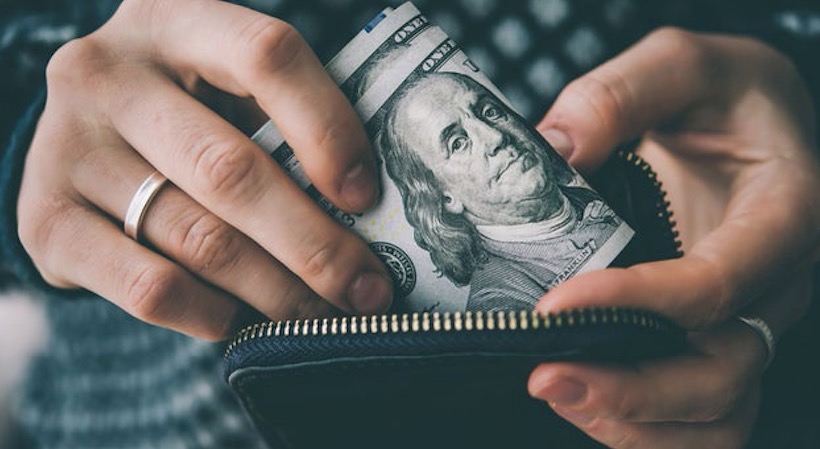What if there were a reliable way to start a business that could significantly improve your life without sacrificing blood, sweat and years? Thanks to Amazon, there is. Unlike most entrepreneurial ventures, you can start an Amazon business by spending just one hour a day on it and less than $2,000.
You can create a multimillion-dollar asset that gives you financial freedom and free time. Here’s what it takes and exactly what it costs.
Research product samples: $100 to $200
Scour Amazon’s categories and products to identify an existing product that will sell. Look for ones with a Best Sellers Rank between 100 and 6,000 in the high-level category, which means they’re selling well but aren’t too competitive. For example, this spatula is number 442 in “Kitchen and Dining” and No. 1 in the “Spatula” sub-category.
Then visit the supplier marketplace Alibaba.com to find manufacturers who produce similar products and order samples of the ones you’re considering. Most samples cost around $50 or $60, and you shouldn’t need more than two or three. You can often request some customization for no extra cost as well. For example, you might ask the supplier to replace a plastic part with a metal one to improve the quality.
Related: When To Sell on Amazon… and When Not To
Order inventory: $500 to $2,500
Product inventory is your primary cost, which includes expenses required to get the product to the customer. Packaging from the manufacturer will likely cost around 50 cents for a $5 product. If it’s coming from somewhere like China, you’ll likely need a freight forwarder to handle shipping and customs for a fee. The best warehousing option is Fulfillment by Amazon (FBA), where you order a certain number of products from the manufacturer and send them to Amazon upfront. Amazon handles shipping, customer service and returns in exchange for a percentage from every sale.
We surveyed hundreds of the Amazon business owners we coach and found that they spend an average of $1,200 on these initial inventory costs. Though you can get by with as little as $500, some products may be too expensive or require higher order minimums. If you start with around $2,500, you can comfortably access almost any option.
I’m often asked how this compares to dropshipping, where you forward your orders straight to the manufacturer or other third-party seller for fulfillment. While you don’t store the inventory yourself either way, it’s night and day otherwise. There’s no upfront inventory investment with dropshipping, but you pay higher prices because you aren’t buying the product in bulk. You also have little control over the product, customer experience, or delivery, which can take much longer.
Design your branding: $5 to $800
While you can sell your product with the manufacturer’s branding, many manufacturers will let you “white label” their product and sell it under your name. Creating your own brand helps you differentiate yourself from the competition and build a business asset you can sell later if you choose.
That means you need to design a logo. If you’re on a tight budget, you can hire a freelance graphic designer on Fiverr.com for as low as $5 or $10. I recommend 99designs.com, where you’re more likely to find a higher-quality result for around $300.
Manufacturers have generic packaging with their logo, and some may be able to do a little customization for free. For completely custom, high-end packaging design, you’ll spend between $300 and $500 on 99designs.
Launch your marketing: $200 to $500
You can usually get by with only a few hundred dollars on upfront marketing. If you want to be more aggressive, you’re looking at around $500. Start with Amazon ads, which is typically the most profitable with 20 percent to 30 percent conversion rates. Then you can graduate to Facebook ads, using a coupon offer or discounted promotion to drive traffic to your Amazon listing.
If you’re dedicated to moving quickly and selling a product that’s light and small, so it doesn’t take long to ship, your business can be up and running within a month and a half to three months. If you execute a marketing campaign when you launch, you should be producing a consistent profit within six months.
These are your only upfront expenses because you can then use your profits to invest in more inventory, build your own website, hire staff to manage your social media, and scale in other ways as you grow.
Sign Up: Receive the StartupNation newsletter!
Stay consistent: free
Building a profitable Amazon business requires a lot of learning and waiting (to hear back from suppliers or receive shipments, for example) but it doesn’t require a constant grind or long workdays. If you can average an hour or two a day, that’s more than enough.
You don’t have to be a workaholic driven by blind passion. You don’t even have to be passionate at all about the product you’re selling. You just need to be consistent and willing to experiment and chip away month after month until you’re successful. You can’t give up when a supplier messes up your order or someone leaves you a bad review. But as long as you’re in it for the long term and willing to work through those things, you already have what it takes.
This article was written by Matt Clark, co-founder and chairman of Amazing.com, co-creator of Amazing Selling Machine, and an Advisor in The Oracles.
Connect with Matt on Instagram and visit AmazingSellingMachine.com to access his new, free four-part training series on how to build a successful Amazon business.






